The Leibniz-IZW regular publishes press releases on key findings and insights from its research and on events, awards or personalia. The press releases are distributed directly to journalists on our press release distribution mailing list. Press releases are also disseminated through the distribution services Informationsdienst Wissenschaft, AlphaGalileo and EurekAlert. Are you interested in receiving our press releases directly via e-mail? In this case please send us an email to presse@izw-berlin.de.
Current press releases
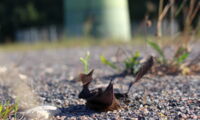
Wind energy and bat fatalities: How improving acoustic monitoring could help protecting biodiversity
In order to assess the risk of bats dying at wind turbines, it is common practice to record the acoustic activity of bats within the operating range of the rotor blades. For this purpose, ultrasonic detectors are attached to the nacelles of the mast top. In a recent analysis, a team of scientists led by the Leibniz Institute for Zoo and Wildlife Research (Leibniz-IZW) concludes that the effectiveness of this acoustic monitoring is insufficient to reliably predict mortality risk, especially for bats at large turbines. They therefore recommend installing supplementary ultrasonic detectors at other locations on the wind turbines and developing additional techniques such as radar and thermal imaging cameras for monitoring. The results of their analysis are published in the scientific journal “Mammal Review”.
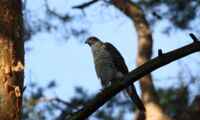
Rodenticides in the environment pose threats to birds of prey
Over the past decades, the increased use of chemicals in many areas led to environmental pollution - of water, soil and also wildlife. In addition to plant protection substances and human and veterinary medical drugs, rodenticides have had toxic effects on wildlife. A new scientific investigation from scientists of the Leibniz Institute for Zoo and Wildlife Research (Leibniz-IZW), the Julius Kühn Institute (JKI) and the German Environment Agency (Umweltbundesamt – UBA) demonstrate that these substances are widely found in liver tissues of birds of prey from Germany. Anticoagulant rodenticides, commonly used to kill rodents in agriculture and forestry, were frequently detected, particularly in birds of prey close to or in urban environments. Especially northern goshawks in the urban conurbation of Berlin and red kites in all habitats were frequently exposed to rodenticides. Evidence of rodenticides in white-tailed sea eagles demonstrated that scavengers occupying habitats more distant from human-modified landscapes are subjected to exposure as well. The results, which were supported by WWF Germany, are published in the scientific journal “Environmental Research”.
Read more … Rodenticides in the environment pose threats to birds of prey
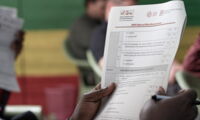
New technologies, new responsibilities: BioRescue develops ethical risk assessment for northern white rhino rescue programme
The BioRescue consortium develops and applies new technological approaches as a last straw for saving critically endangered species such as the northern white rhinoceros. Advanced Assisted Reproductive Technologies (aART) push the boundaries of what can be done to create new offspring. Consequently, new ethical questions regarding the application of these tools arise and need to be answered, and relevant animal welfare issues to be addressed. In order to ensure that the ethical risk assessment matches the technological breakthrough with aART, the BioRescue consortium developed and applies the “ETHAS” tool, an ethical self-assessment tool explicitly designed for assisting oocyte collections, in vitro fertilizations, embryo transfers and further procedures of the BioRescue consortium. ETHAS was developed under the leadership of Padua University and is described in detail in a new paper published in the scientific journal “Animals”.
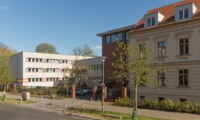
Successful evaluation of the Leibniz-IZW – funding recommended for another seven years
The Senate of the Leibniz Association published its official statement on the regular evaluation of Leibniz-IZW on March 18, 2021. Leibniz institutions are evaluated by the Leibniz Senate every seven years at the latest. The evaluation focuses on an independent assessment of how the institution has developed in the intervening years, in terms of content and structure, as well as on the persuasiveness of its plans for the future. The Senate of the Leibniz Association adopts a statement on the basis of this evaluation, which usually contains recommendations for further funding of the institution. For Leibniz-IZW, the Senate of the Leibniz Association recommends that the Federal Government and the Länder continue joint funding of the institute.
Read more … Successful evaluation of the Leibniz-IZW – funding recommended for another seven years
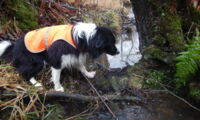
Sniffing for science
Berlin, 02.03.2021; joint press release of the Helmholtz Centre for Environmental Research (UFZ) and the Leibniz-IZW
The lists of the world’s endangered animals and plants are getting increasingly longer. But to stop this trend, important information is lacking. It is often difficult to find out exactly where individual species still occur and how their populations are developing. Specially trained detection dogs can be a valuable help in such cases, as a new scientific publication review shows. With the help of detection dogs the searched species can usually be found faster and more effectively than with other methods, report Dr Annegret Grimm-Seyfarth and Wiebke Harms from the Helmholtz Centre for Environmental Research (UFZ) and Dr Anne Berger from the Leibniz-Institute for Zoo and Wildlife Research (Leibniz-IZW) in the scientific journal "Methods in Ecology and Evolution".
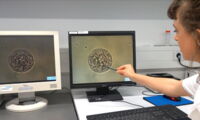
RNA analysis unravels the cues for feline fertility and brings hope for endangered wild cats
Creating living embryos using artificial reproduction technologies provides a promising avenue to rescue mammalian species at risk of extinction. In order to grow in vitro a sufficient number of female gametes fit for fertilisation, scientists have to replicate the natural development of ovarian follicles right from the earliest – primordial – stage. Now, the first comprehensive analysis of gene expression (transcriptome) in early ovarian follicles of domestic cats gives an insight into the fundamental physiological mechanisms that could trigger follicle activation and growth in a species other than mice. The scientific work, performed by the scientists of the Leibniz Institute for Zoo and Wildlife Research (Leibniz-IZW) and the Berlin Center for Genomics in Biodiversity Research (BeGenDiv),is an essential stepping-stone towards supporting oocyte growth in vitro.
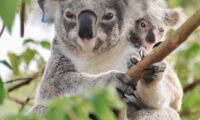
Retroviruses are re-writing the koala genome and causing cancer
Koalas are facing multiple environmental and health issues which threaten their survival. Along with habitat loss - accelerated by last year’s devastating bush fires – domestic dog attacks and road accidents, they suffer from deadly chlamydial infections and extremely high frequency of cancer. An international team of scientists led by the Leibniz Institute for Zoo and Wildlife Research (Leibniz-IZW) now demonstrate that a retrovirus invading the koala germline explains the high frequency of koala cancer. The results are reported in the journal Nature Communications.
Read more … Retroviruses are re-writing the koala genome and causing cancer
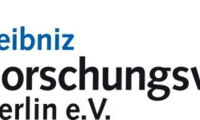
Anti-Human Trafficking Compliance Plan
USAID Biodiversity Conservation Activity
In order to comply with the WWF "trafficking in persons" (TIP) policy Forschungsverbund Berlin e.V. (FVB) has developed this Anti-Human Trafficking Compliance Plan (AHTCP) within the framework of the USAID Biodiversity Conservation Activity.

